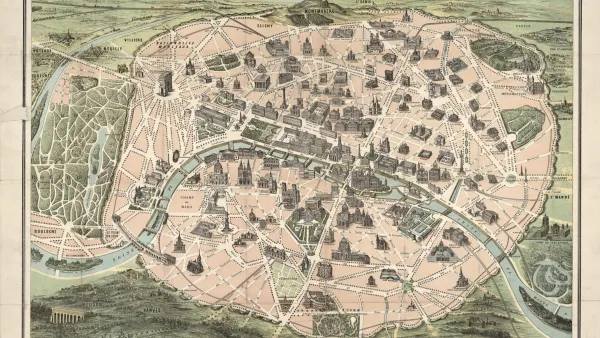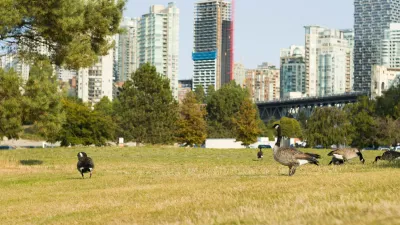Biodiversity is not something “out there”, studied in labs, outside of our cities. It is a borderless organism that resists complete solutions to the problems arising in such interconnectivity.
Biodiversity can be defined as the variety of habitats in a given area. It encompasses all living organisms, from birds, animals, insects and aquatic life to the bacteria in your gut. We have policy-approved definitions too. A convenient one is that prescribed by the 1993 Convention on Biological Diversity:
“Biological diversity” means the variability among living organisms from all sources including, inter alia, terrestrial, marine and other aquatic ecosystems and the ecological complexes of which they are part; this includes diversity within species, between species and of ecosystems.
Perhaps more simplistically, or with more utility, biodiversity is life. It is us. How we act, what we build; we are it. The economy, culture, politics. It is the decisions we make. The decisions we do not. Biodiversity is place. It makes our surroundings. It’s our imagination reflected in the environments we create. It is our breath, our food, how we can be neighbours, a community. Biodiversity is both state of the environment – an adjective describing if X is biodiverse – and a measurement – a way to quantify the number of species and habitats in a given area.
Each of these notions are worthy of numerous articles themselves.[i] There is a rich literature detailing that we are a species constructed by our environment – we do not only shape our landscape but it shapes us. Gabor Maté illuminates this in his work When The Body Says No – how stress affects us physiologically. Who we are – how our genes are expressed – is a product of our entanglement with daily life.
Biodiversity is not something “out there”, studied in labs, outside of our cities. It is not beyond who we are every.single.day. Biodiversity is a borderless organism, and that is beautiful – recognizing how entwined we are, how dependent we are on each other, how important community is. This system – our bodies, our cities, our countries, our planet, where problems arise and where problems must be solved – operates wickedly, not immorally or sinfully, but rather resists complete solutions to the problems arising in such interconnectivity.
What does a wicked problem entail? Former biodiversity Policy Officer for the European Commission Martin Sharman [PDF] writes that, “Wicked problems arise when the boundaries of messes expand to include socio-political and moral-spiritual issues.” They are a “class of social system problems which are ill-formulated, where the information is confusing, where there are many clients and decision-makers with conflicting values, and where the ramifications in the whole system are thoroughly confusing.”
How is urban biodiversity conservation a wicked problem? The typical culprits of biodiversity loss are land conversion, land fragmentation, climate change, invasive species and consumerism.[ii] This is an urban issue, and we are an urban species, or perhaps more accurately, we have become an urban species. Globally, we’re now over 50% urban. In Canada that number rises to 80%. How each element of loss integrates – how one further advances the other – advances wickedness. In the words of the authors at Stockholm Resilience Centre,
A key feature to address in the integration of human and natural systems [which together are biodiversity] arises from the fact that we are faced with feedback loops between cities and the global environment. ... Responses (within and around urban areas) to global environmental changes eventually impact urbanization processes themselves. Models that only partially address components of this wider feedback loop are destined to capture an incomplete picture of a coupled natural-human system and will be limited in their capacity to project urban futures.[iii]
As the SRC authors illustrate, cities are finely interconnected with biodiversity: their development increases loss and attempting to resolve the issue of urban biodiversity conservation tends to spur the development of another mechanism of loss. Solving one issue – land conversion through protected areas – may create new issues of invasive species pathways.
When we don’t recognize wickedness we can become complacent in meeting an objective in biodiversity conservation. For example, the Convention on Biological Diversity’s Strategic Plan for Biodiversity has a strategic goal to safeguard ecosystems and genetic diversity. One indicator to meet this objective is to increase protected areas. But research has shown that our history of conservation area development has not correlated with decreasing biodiversity loss.[iv] Martin Sharman argues that there are two problems here: we legislate loss – require protected areas which correlates with positive “status” of biodiversity – rather than recognizing the drivers of loss are often outside of the protected area. And two, “status” is problematic as ecosystems are dynamic. “If you can’t define a desirable status, how might you go about defining a desirable dynamic for biodiversity?”
With the recognition of wickedness, biodiversity conservation isn’t simply about targeting the protection of X amount of land or X amount of water. It’s not simply about raising awareness or implementing green roofs and planting more street trees. These of course are purposeful, but what is needed is to rethink how we incorporate nature into our communities in a way that sustains ecosystems, and more so, how we are incorporated in nature, how cities are nature, how we are nature. We have to think less about targets and more about principles; less about best practices and more about locally developed novel solutions. We can’t be satisfied by meeting a target but rather consistently and tirelessly move away from paths we know to be detrimental to biodiversity, to us.
*Part 2 in this series will broaden wicked problems to city planning itself.
[i] Full disclosure: anticipate forthcoming articles that intend to summarize and give different contexts to some of these deeply complex and very interesting ideas.
[ii] Again, rich literature; more articles can be anticipated.

Maui's Vacation Rental Debate Turns Ugly
Verbal attacks, misinformation campaigns and fistfights plague a high-stakes debate to convert thousands of vacation rentals into long-term housing.

Planetizen Federal Action Tracker
A weekly monitor of how Trump’s orders and actions are impacting planners and planning in America.

In Urban Planning, AI Prompting Could be the New Design Thinking
Creativity has long been key to great urban design. What if we see AI as our new creative partner?

King County Supportive Housing Program Offers Hope for Unhoused Residents
The county is taking a ‘Housing First’ approach that prioritizes getting people into housing, then offering wraparound supportive services.

Researchers Use AI to Get Clearer Picture of US Housing
Analysts are using artificial intelligence to supercharge their research by allowing them to comb through data faster. Though these AI tools can be error prone, they save time and housing researchers are optimistic about the future.

Making Shared Micromobility More Inclusive
Cities and shared mobility system operators can do more to include people with disabilities in planning and operations, per a new report.
Urban Design for Planners 1: Software Tools
This six-course series explores essential urban design concepts using open source software and equips planners with the tools they need to participate fully in the urban design process.
Planning for Universal Design
Learn the tools for implementing Universal Design in planning regulations.
planning NEXT
Appalachian Highlands Housing Partners
Mpact (founded as Rail~Volution)
City of Camden Redevelopment Agency
City of Astoria
City of Portland
City of Laramie






























